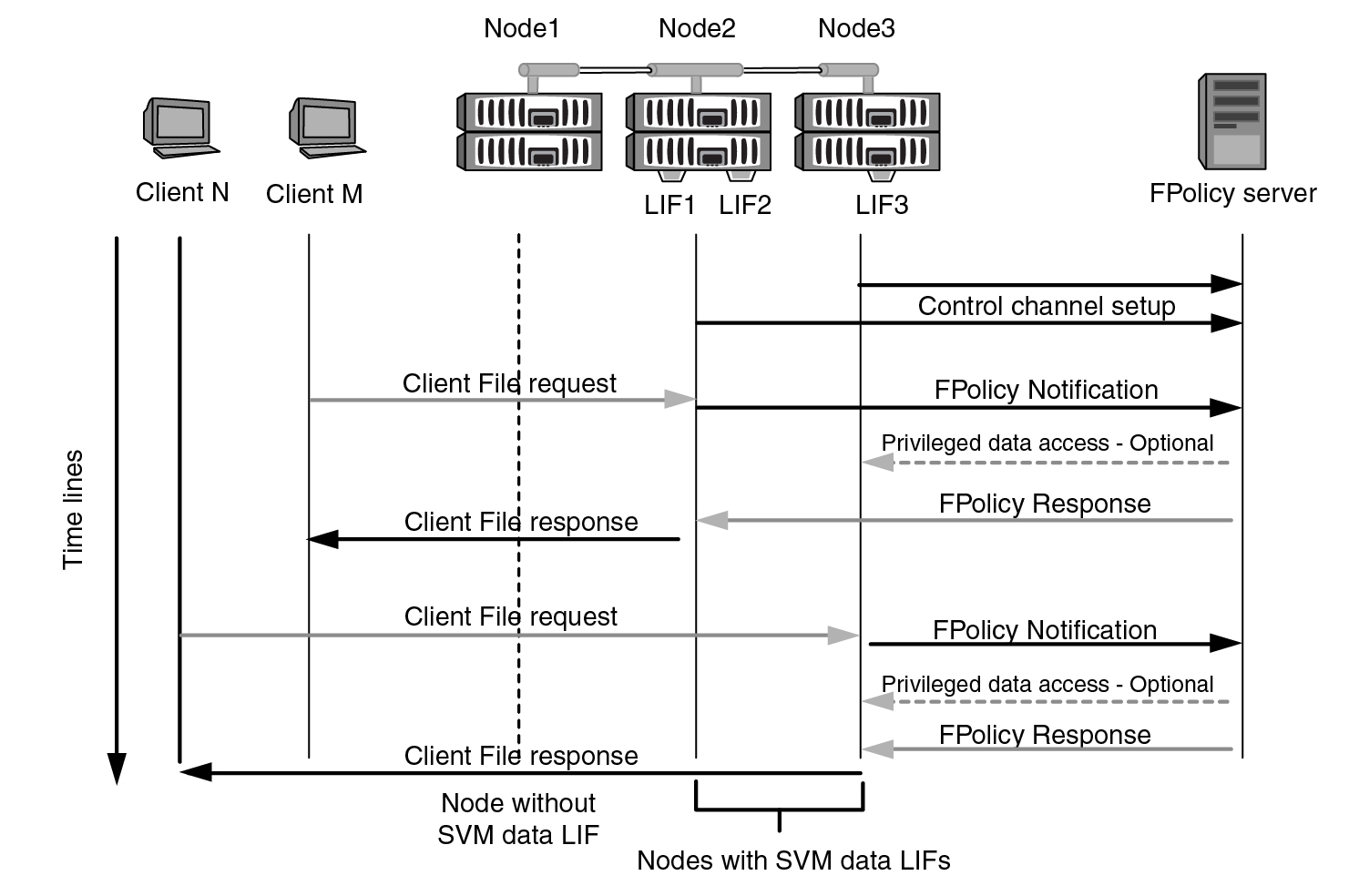What the node-to-external FPolicy server communication process is
To properly plan your FPolicy configuration, you should understand what the node-to-external FPolicy server communication process is.
Every node that participates on each storage virtual machine (SVM) initiates a connection to an external FPolicy server (FPolicy server) using TCP/IP. Connections to the FPolicy servers are set up using node data LIFs; therefore, a participating node can set up a connection only if the node has an operational data LIF for the SVM.
Each FPolicy process on participating nodes attempts to establish a connection with the FPolicy server when the policy is enabled. It uses the IP address and port of the FPolicy external engine specified in the policy configuration.
The connection establishes a control channel from each of the nodes participating on each SVM to the FPolicy server through the data LIF. In addition, if IPv4 and IPv6 data LIF addresses are present on the same participating node, FPolicy attempts to establish connections for both IPv4 and IPv6. Therefore, in a scenario where the SVM extends over multiple nodes or if both IPv4 and IPv6 addresses are present, the FPolicy server must be ready for multiple control channel setup requests from the cluster after the FPolicy policy is enabled on the SVM.
For example, if a cluster has three nodes—Node1, Node2, and Node3—and SVM data LIFs are spread across only Node2 and Node3, control channels are initiated only from Node2 and Node3, irrespective of the distribution of data volumes. Say that Node2 has two data LIFs—LIF1 and LIF2—that belong to the SVM and that the initial connection is from LIF1. If LIF1 fails, FPolicy attempts to establish a control channel from LIF2.
